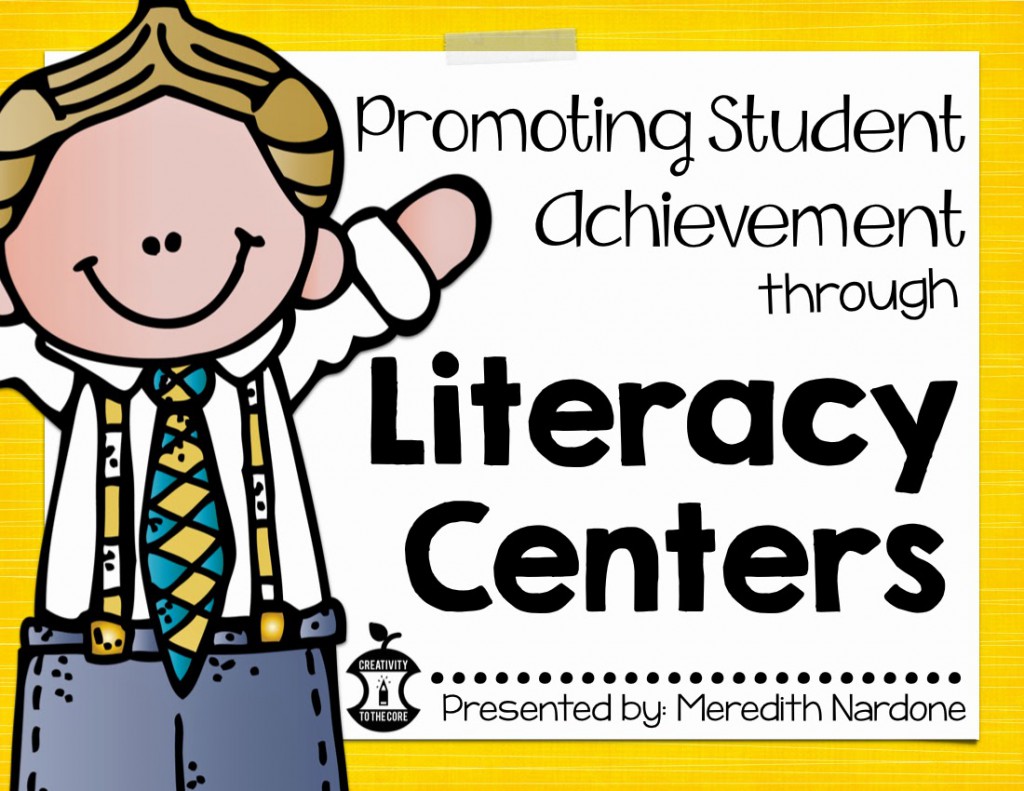
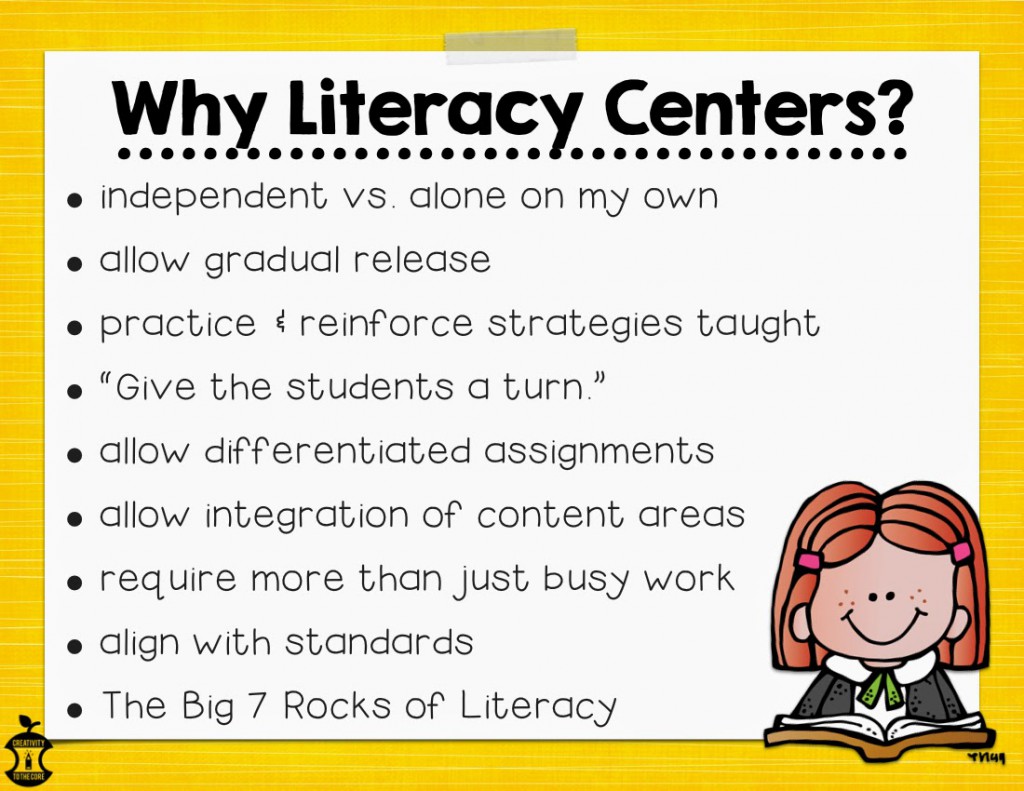
Why should you teach through literacy centers?
Literacy centers allow us to gradually release students throughout the year. We teach them directly in small group when they are just beginning, and then as they become more knowledgable, we allow them to work on their own. This gives students a turn to practice and reinforce the strategies that we teach them.
When students are at centers, it is easy to differentiate their work. Differentiation is also not as obvious to other students when it is done in centers. I can have completely different activities going on, but students do not realize it because they are around the room working in groups. Integrating content is SO simple when you teach in a classroom that is full of centers. Students can connect material throughout the day in reading, math, social studies, and science.
And of course, you can plan centers to align directly with your standards.
Finally, literacy centers should include the 7 main components of reading: comprehension, phonemic awareness, phonics, fluency, writing, speaking & listening, and vocabulary. Jen Jones, from Hello Literacy, calls these the Big 7 Rocks of Literacy.
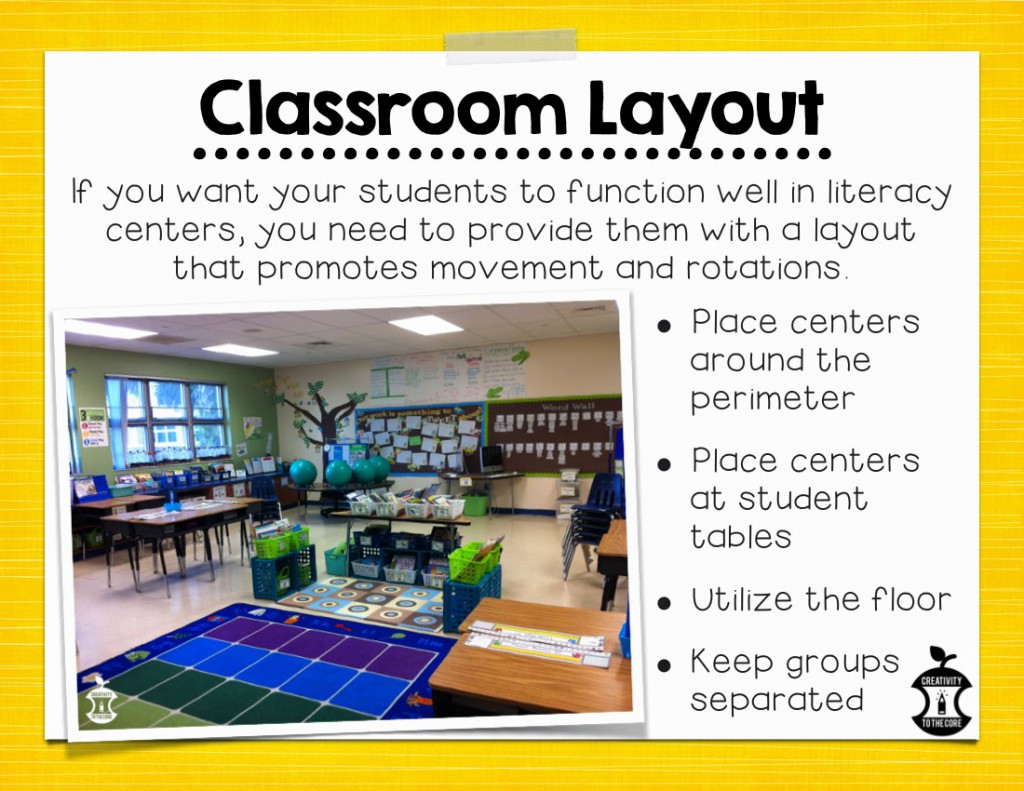
If you do not have centers up and running in your classroom, the first thing you will need to do is figure out a layout for your furniture. Furniture should be placed in a way that will promote movement. In primary classrooms, it is convenient to have activities rotating around the perimeter of the room. In the picture above, you will see my first grade classroom last year. I placed my small group table in the back corner (with the ball chairs). My centers were then placed around the perimeter of the room so that I could “keep an eye on” everyone. Students who were reading would sit on the carpet in the center of the room. I liked this set up because the groups of students were separated just enough so that each group was able to stay on their assigned task.
Centers do not have to be at tables that are separate from desks. Frequently, I would set a center bin at a group of desks. Students would sit at that group of desks to complete the center. We also use the floor a lot. Students LOVE reading and completing sorting activities on the floor!
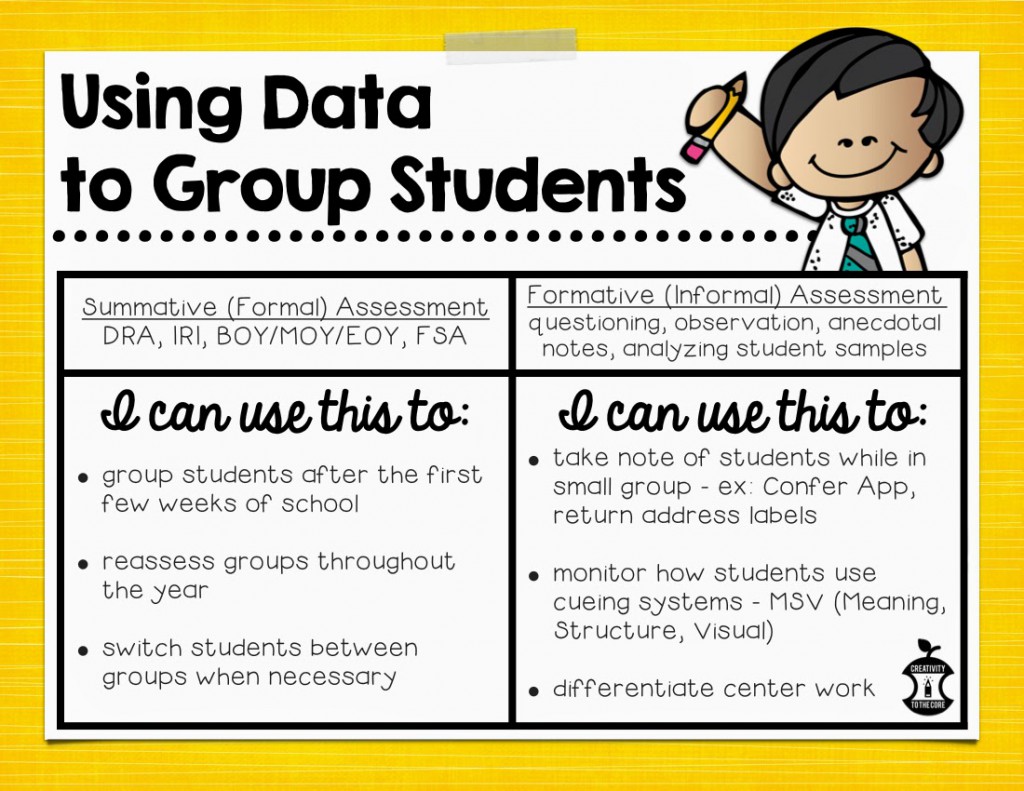
Is your school in love with data?
Mine is! There are state assessments, county assessments, school-wide assessments, grade level assessments, in class assessments, and observations. Whew! It can make a teacher crazy. However, we can use the important data to help us create center groupings.
In my classroom, I use summative assessments to determine reading groups at the beginning of the year. At this point, I do not know much about my students or their strengths and weaknesses. As reading groups are used throughout the first few weeks/months, I use the subsequent summative assessments to regroup students.
Formative assessment is perfect for taking note of how students are reading. While in small group, I use black return address labels to write little notes or observations that I see. At the end of the week, I simply peel each label off and place it on the inside flap of the specific student’s folder. These notes are wonderful during conference time. I am just beginning to use the app Confer to do this same thing. See my previous post about this data tracking app here. Formative assessment helps teachers to differentiate center work. Don’t wait for a formal test to change a student’s assignment! If you see something that they need, go for it!
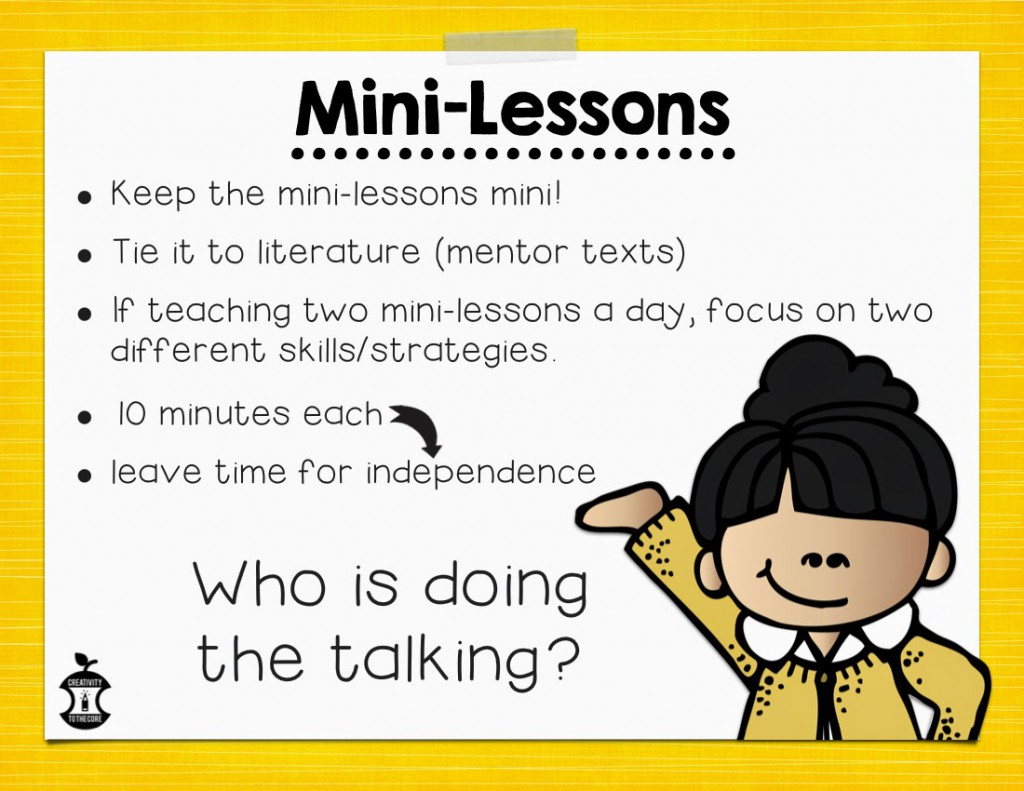
Mini-lessons are the first part of my day.
I teach a short 10-15 minute mini-lesson to introduce our topic of the week or review something that we need to practice. I always love using literature, a short movie clip, or a song to grab the students’ attention! As teachers, we often teach too long in the beginning of a lesson because we are excited about the material. When we think about it, we are talking and students are “listening”. It is important that we let the students do the talking. When you keep a mini-lesson short, it leaves time for students to show their independence on that particular skill.
Literacy Centers
When you begin forming your literacy centers, you should think about the centers that you want to include in your classroom. Everyone has different preferences here. I had 6 different centers in my first grade classroom: read to self, spelling, word work, computers, content area, and work on writing.
How do you rotate?
Above is my rotation chart. I had three reading groups that I met with daily (horizontal across the top). These were homogeneous groupings. Vertically on the left, I had “center partners”. These were heterogeneous groupings. One child from each of the reading groups was placed together as “center partners”. So, at the end of the day, each student went to two centers and my small group.
When I asked students to find their first center, they would all go to the center in the first column. Three students would be at each center. Then, I would call my first reading group “Cardinals”. One child from each center would come to me, leaving two kids at the center. This continued during reading group two and three. After about two weeks, I didn’t need to send students to their centers first. They learn quickly and know to just skip the center during their reading group time!
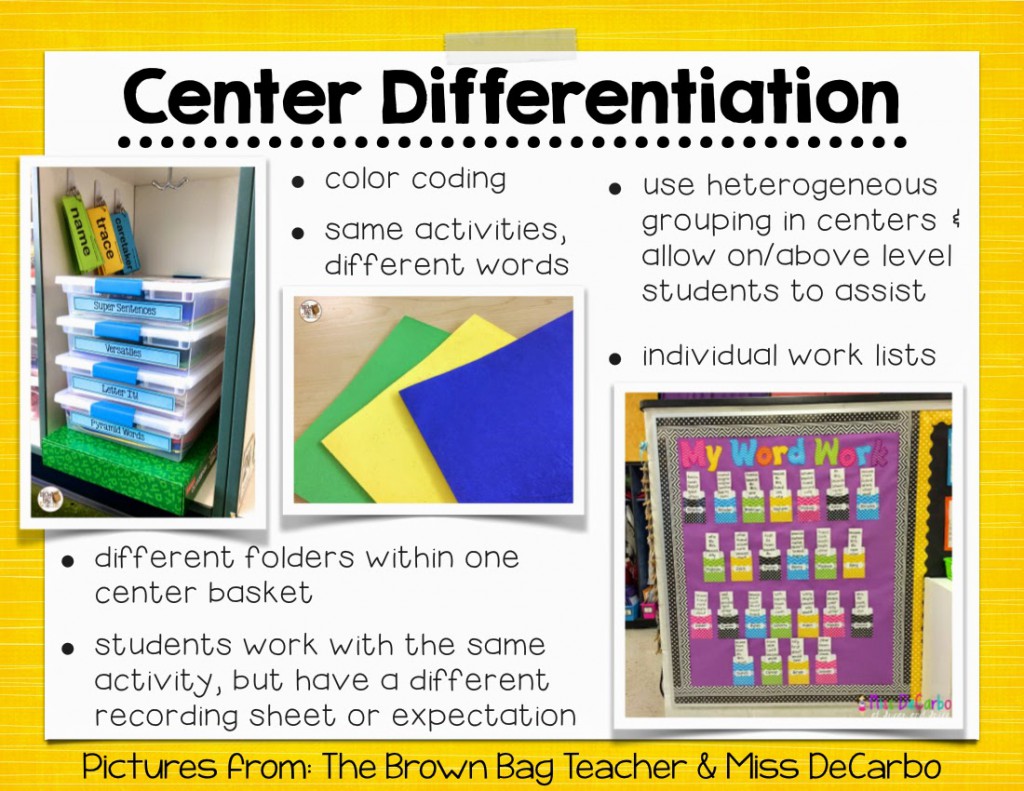
Differentiation is my favorite part of centers. Centers make differentiation so simple! Look at the image above to see some fun ways to provide students with instruction that is at their individual levels. I love these ideas from two of my favorite teacher bloggers! The Brown Bag Teacher uses folders that are color coded to match student reading groups. These folders are placed in each center activity bin. When students go to the bin, they just grab their folder and begin working! Miss DeCarbo differentiates word work by integrating student choice and differentiated sight words. Students keep words for a short time or for a few weeks…depending on what the specific student needs.
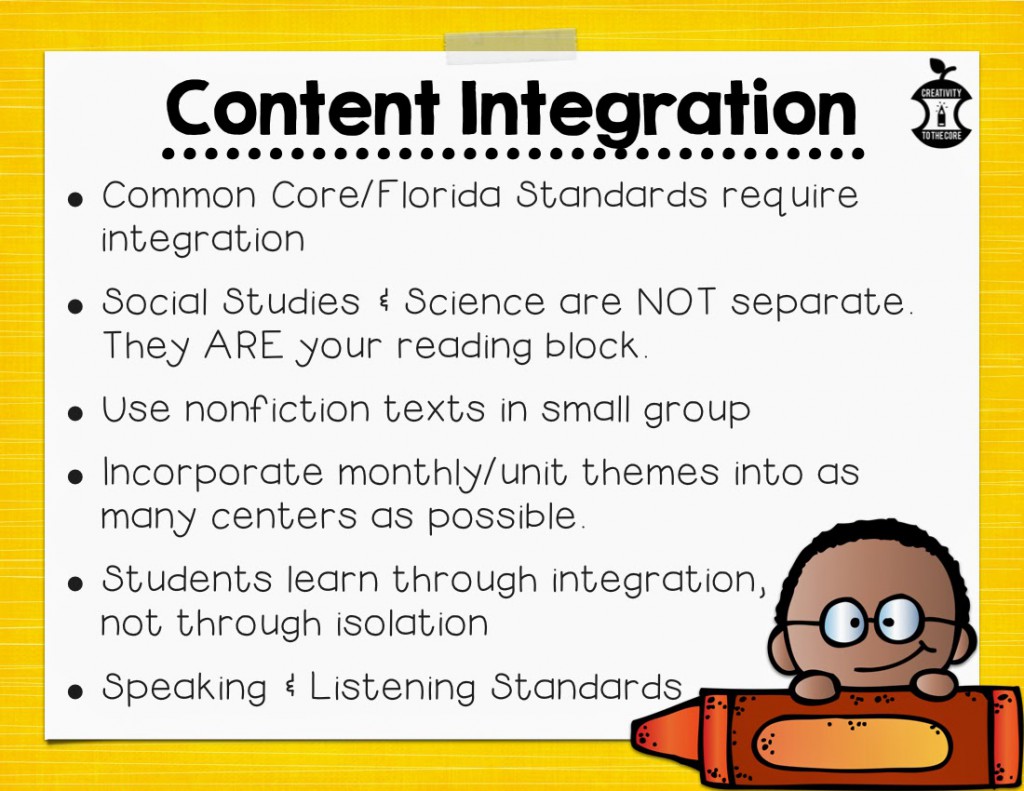
Remember, these images are from the PD given to my school. In our county, social studies and science are NOT given separate times in the day. We must integrate social studies and science (and math!) into our reading block.
Integrating content into literacy centers allows teachers to create thematic units in the classroom. Students in my classrooms have always enjoyed learning when it is built into what they are reading. Using nonfiction texts or magazines in small group is a great way to integrate! As students begin to discuss and respond orally to what they are reading, it is easy for teachers to incorporate the new speaking and listening standards!
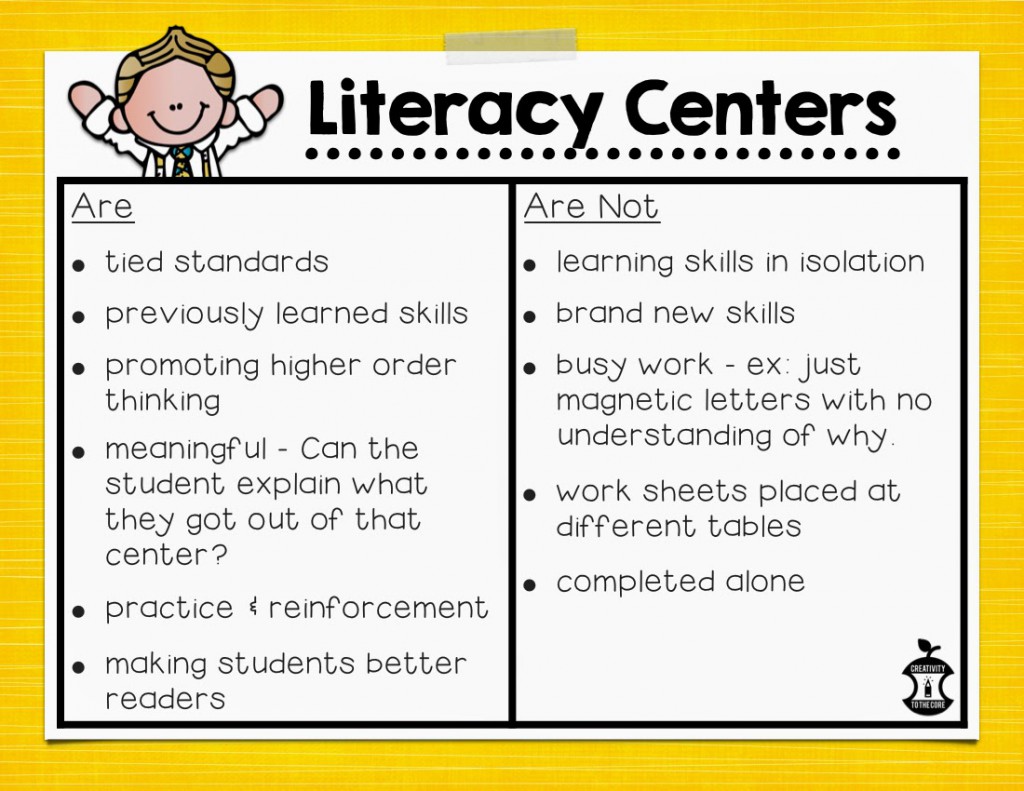
I compiled the following literacy block examples for different grade levels in my school in order to show teachers how to use the same topics and standards throughout many centers throughout the week. They may not work for your students or your curriculum. Please remember, these are just examples! 🙂
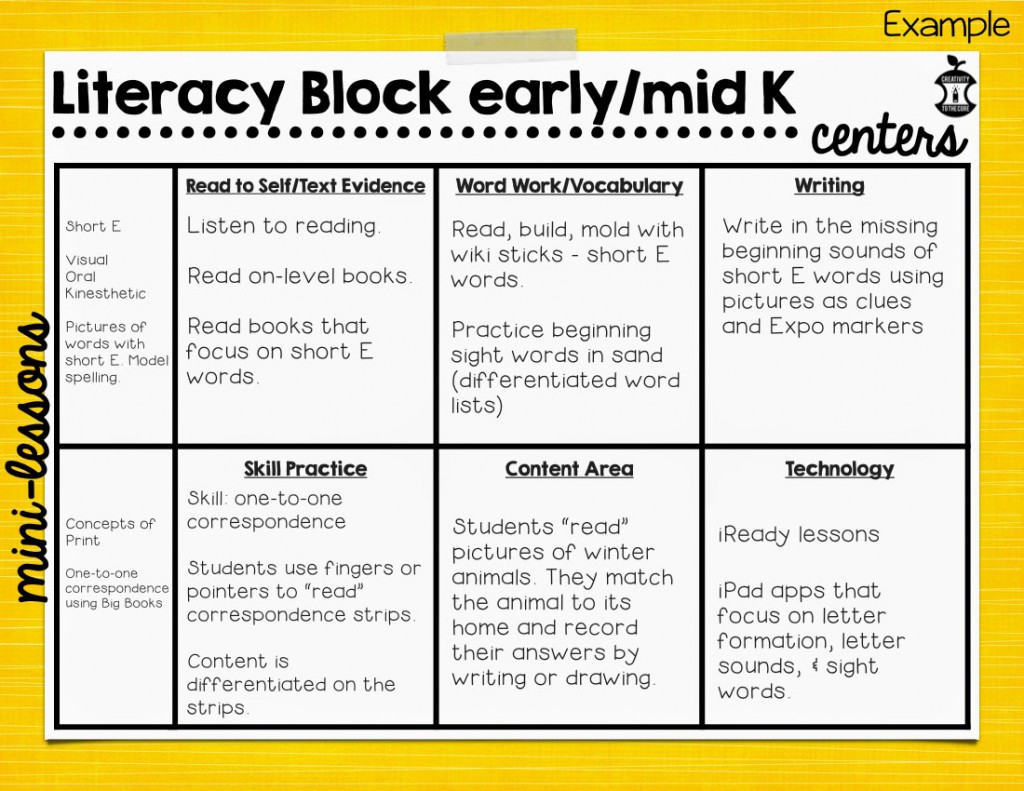
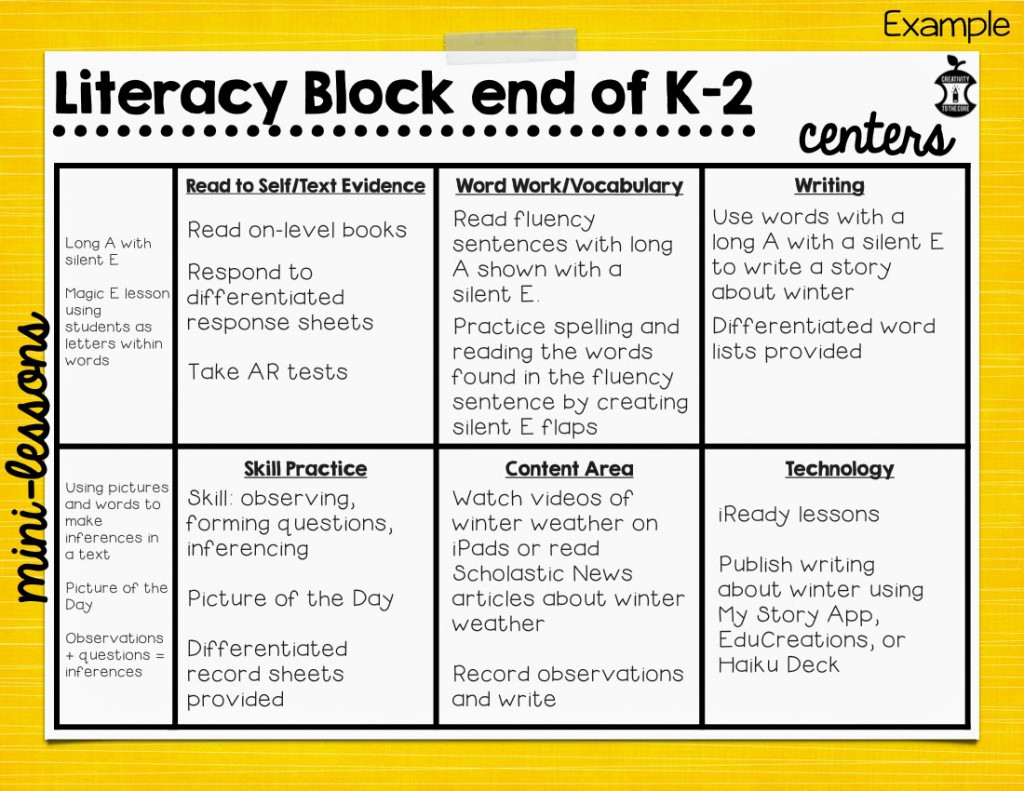
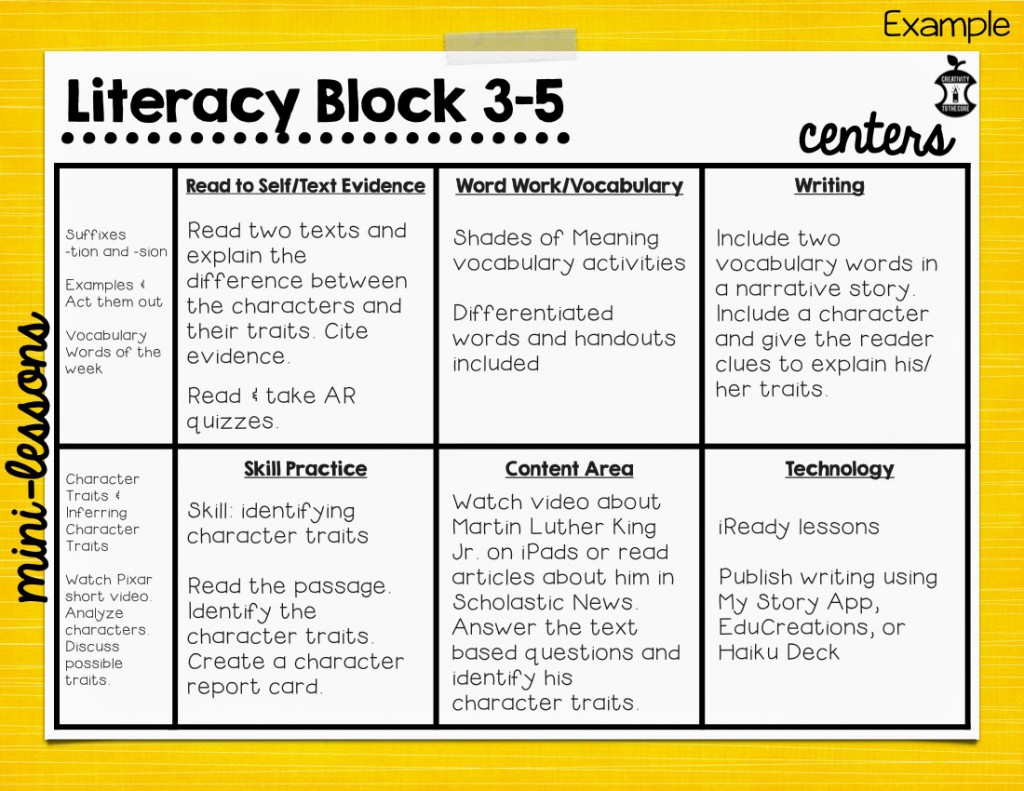
I also wanted to show teachers how the same six centers can be used in K-5 classrooms. I created these little charts as a way to show the progression of ideas and activities within each center from grade level to grade level. Again, these are just examples! Add or subtract anything you wish.

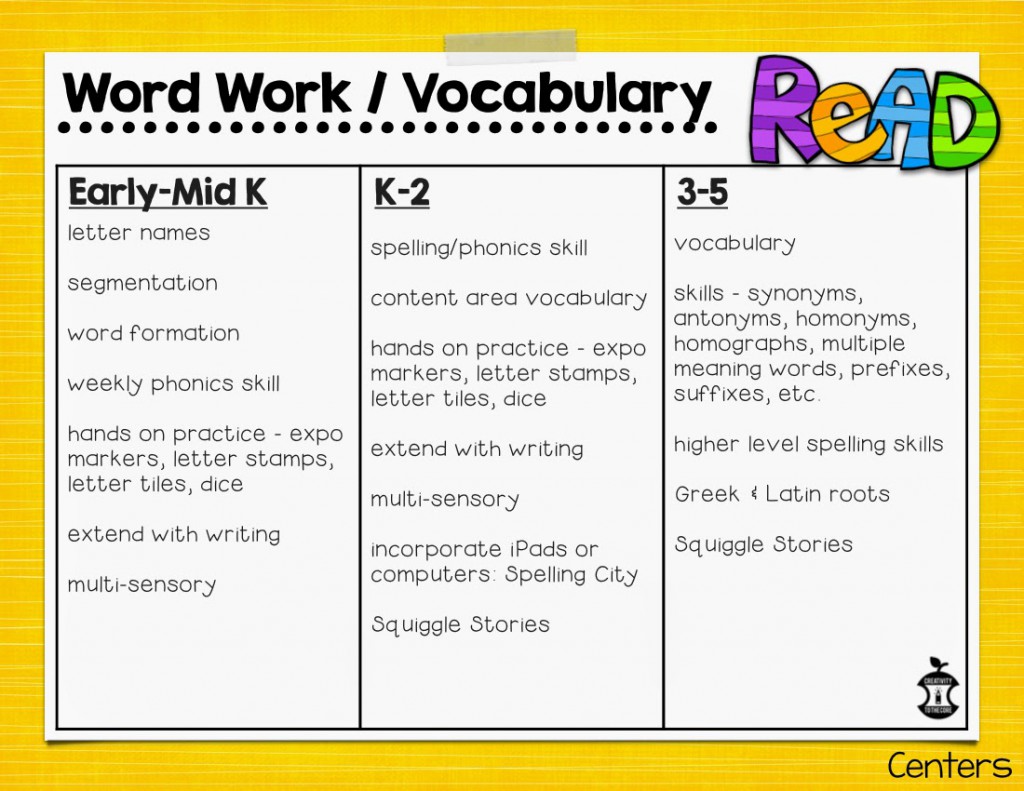
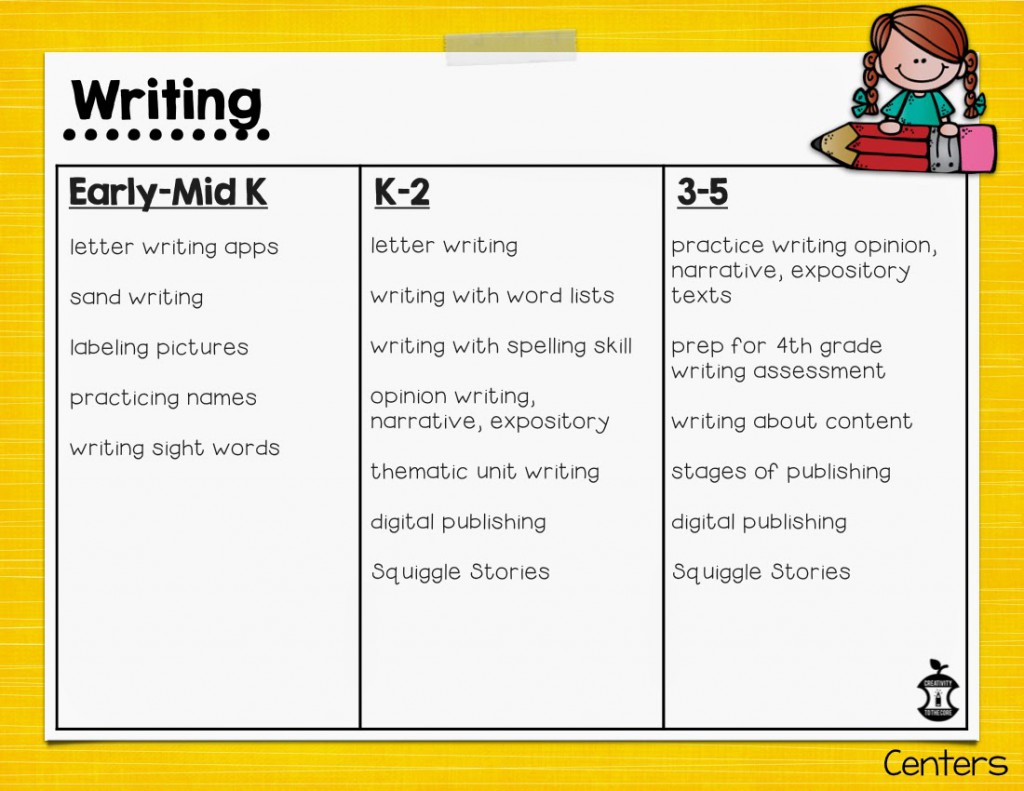

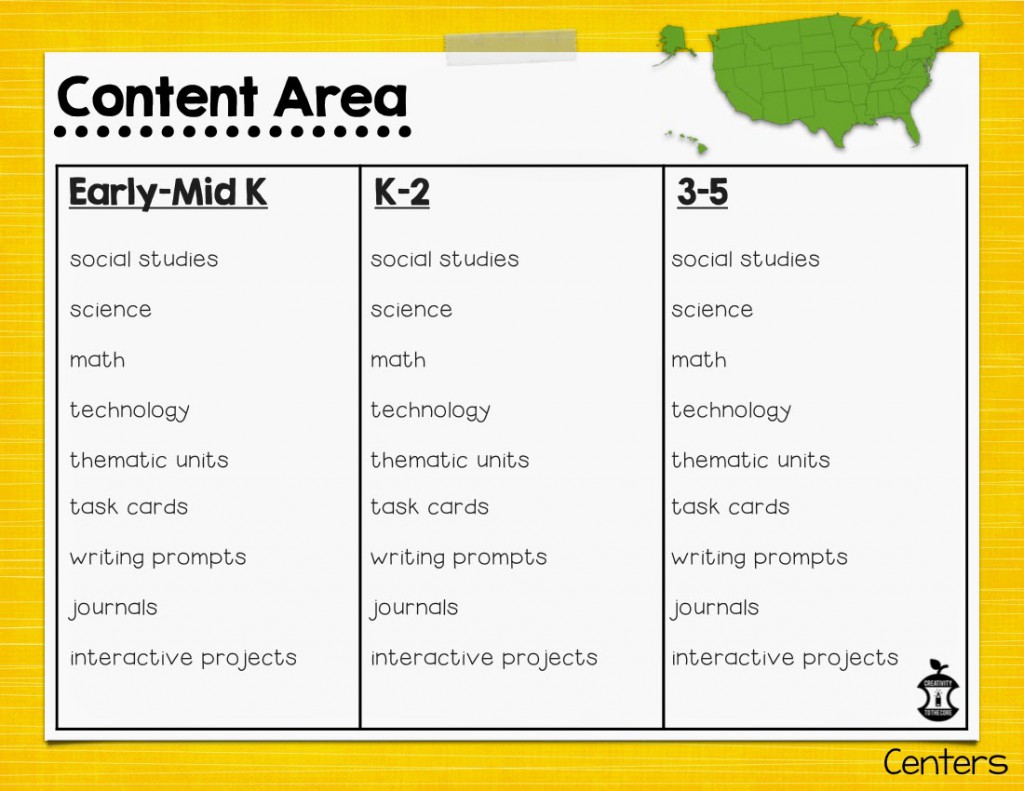
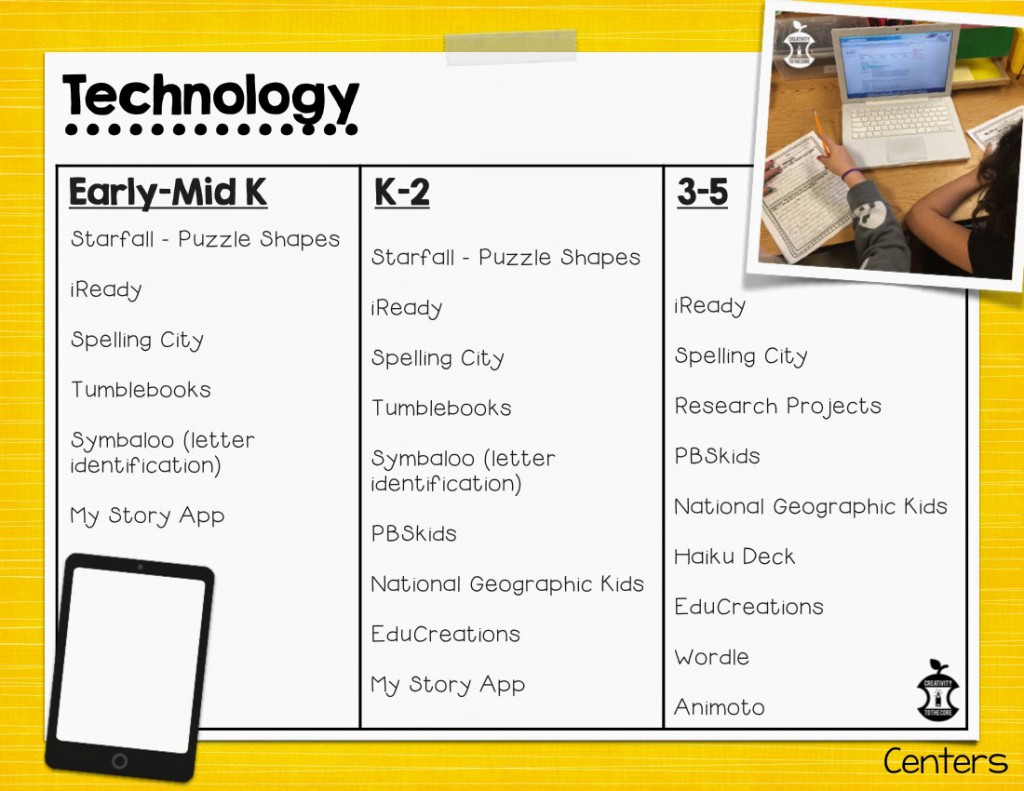
Small group is my favorite time of day. I love the “almost” one-on-one interaction that I get with my students. This is when I really get to know them. I love the layout that Dianna from Sassy Savvy Simple Teaching created. I printed it out and gave it to all of the teachers in the PD. It is easy to understand and perfect for planning your small group instruction! Below is an example of Dianna’s layout as well as a tweaked version that I created for our 3-5 grade teachers.
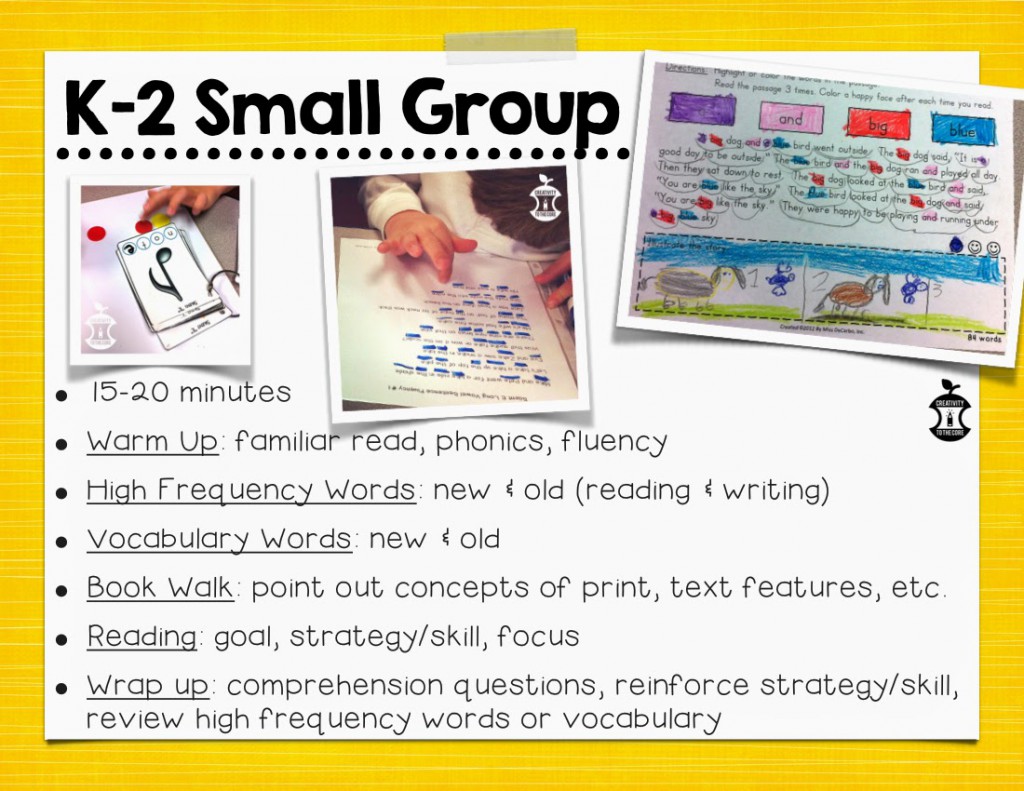
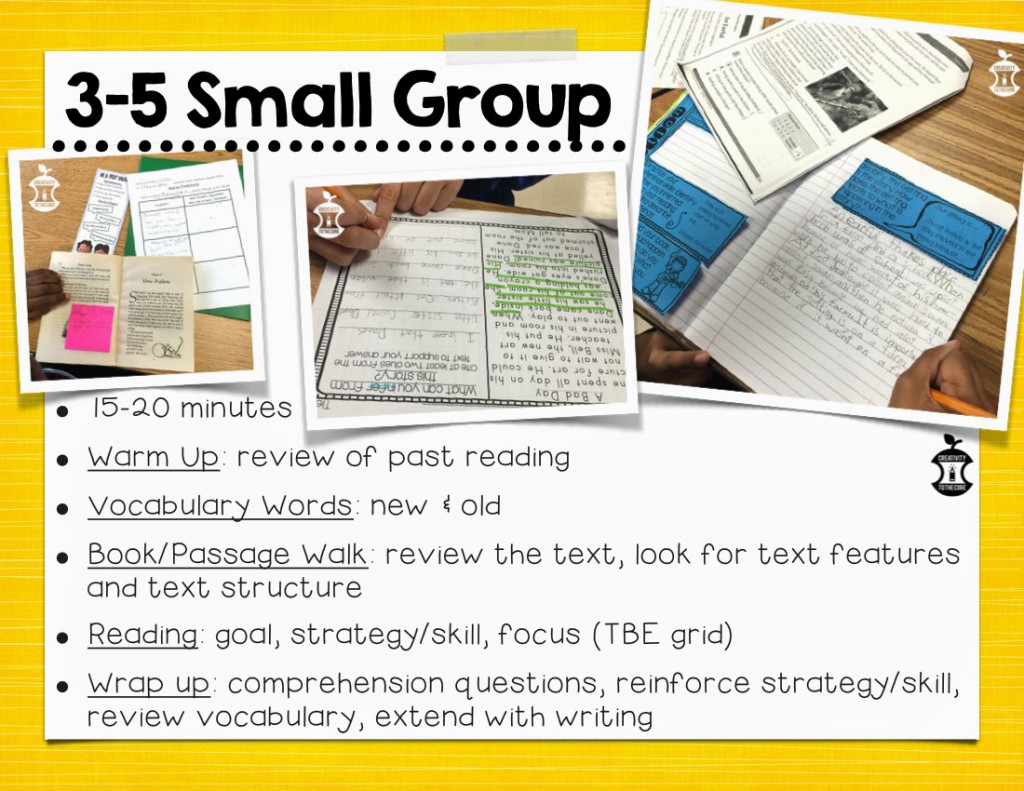 |
| Fonts: Hello Literacy & KG Fonts. Backgrounds: Sassydesigns.net. Clipart: Melonheadz. |

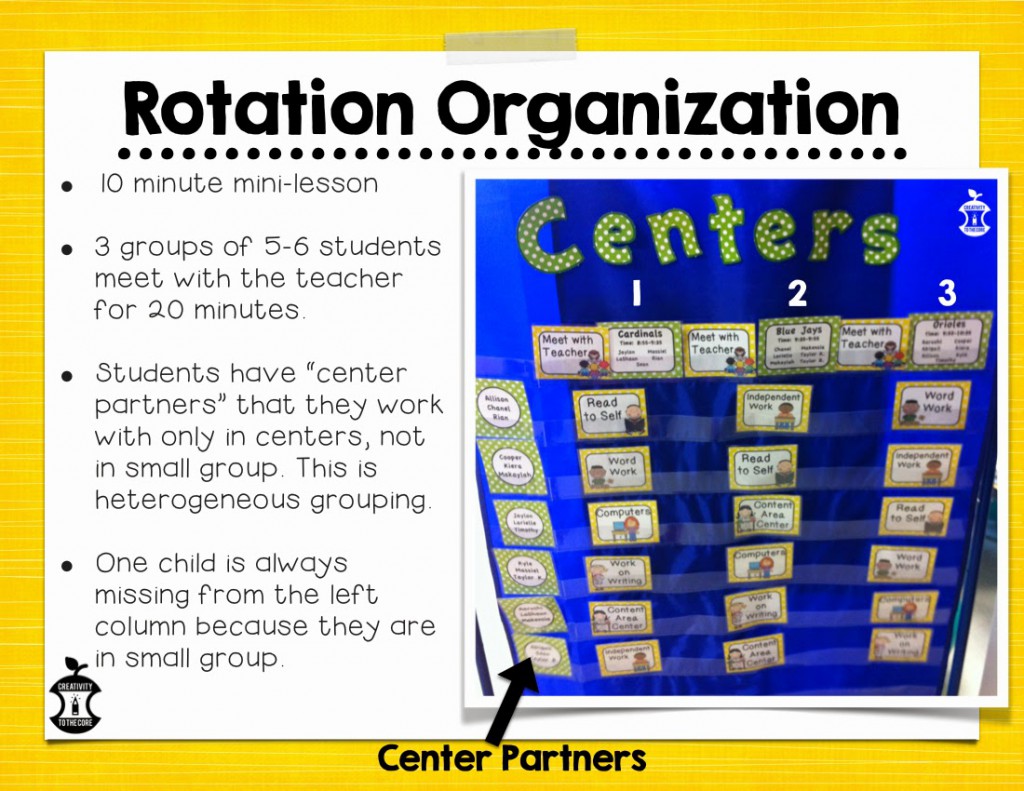

How do you move the groups so they go to differing centers? Do you move the names or the station icons? Thanks, Leigh Ann